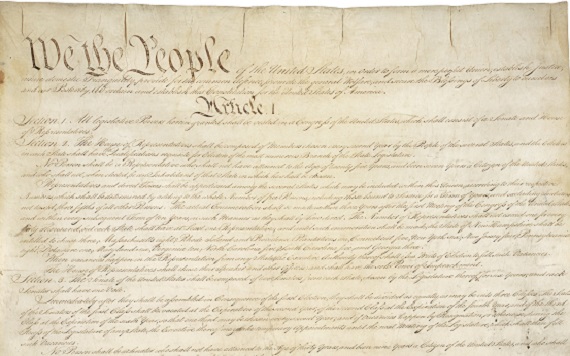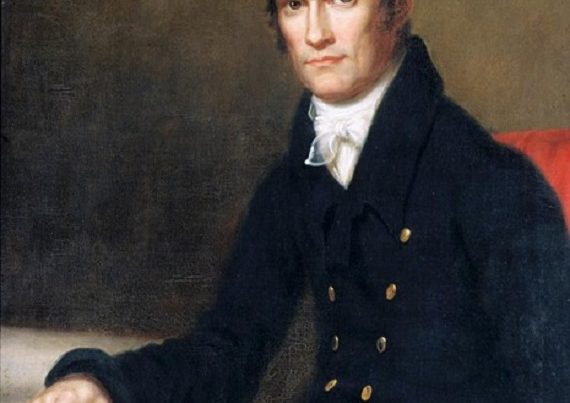The Electoral College, a bulwark of federalism, is under attack. Straightforward abolition of the Electoral College would require a constitutional amendment, which is most unlikely to be passed in the foreseeable future. But the Electoral College now faces a more serious, insidious threat from the so-called National Popular Vote Interstate Compact (NPVIC,) which purports to operate through the Electoral College while effectively undermining it. Misunderstanding of the meaning of the constitutional provisions governing the Electoral College on the part of university professors does not help either.
What’s wrong with the Electoral College? Nothing. Why, then, is it under so much attack? One reason is a complete failure to understand the U.S. Constitution. I am quite used to explaining it to groups of students and members of the general public. But I now realize that there are even American university professors who are “constitutionally challenged.”
An example that I came across recently is an article by a certain Robert Speel, an Associate Professor of Political Science at Penn State University. The article is titled, “Three common arguments for preserving the Electoral College – and why they’re wrong,” published on November 15, 2016, in an online journal called “The Conversation,” whose watchword is “Academic rigour, journalistic flair.”
Right at the beginning of his article Robert Speel misdefines the Electoral College as “the 18th-century, state-by-state, winner-take-all system for selecting the president.” This definition is wrong because it lumps together two completely different and distinct systems: the Electoral College on the one hand, and, on the other, the winner-take-all system. The Electoral College system is mandated by the U.S. Constitution, but winner-take-all is not.
Alternatives to Winner-Take-All
The two systems do often coexist, but that is by no means automatic, and there are several alternatives to the winner-take-all mechanism which can be used together with the Electoral College system. These include the so-called “congressional district” method used by Nebraska and Maine, the National Popular Vote Interstate Compact (NPVIC) – and a proportional system, which has hardly been mooted but which, I believe, is by far the simplest, fairest and most democratic of all. I will discuss these alternatives later in this article.
What the Constitution Says
Article II, Section 1 of the Constitution stipulates that the president is to be elected by “electors” chosen by the states, the number of electors for each state being the number of congressional representatives plus the number of senators from that state. At present, for example, California has 55 electors (53 + 2), Florida 29 (27 + 2), Georgia 16 (14 + 2), and Arkansas 6 (4 + 2), The Constitution does not say how these electors are to be chosen, but leaves that up to each individual state to decide. The Constitution does stipulate that the winning presidential candidate needs a majority (in other words, over 50%) of the total of electoral votes. The total number of electoral votes currently stands at 538, so a candidate needs 270 electoral votes to move into the White House. It is these 538 electors who form the “Electoral College,” a term that does not actually appear in the Constitution and which is slightly misleading, as the electors from all the different states never actually meet together.
The Constitution does not concern itself with the popular vote, only with the electoral vote, but, as already mentioned, the way the electors are chosen is left entirely to the individual states.
Winner-Take-All
Although there are several alternative mechanisms that can be combined with the Electoral College system, all but two of the states use the fundamentally unfair winner-take-all mechanism to choose their electors. This means that whichever candidate gets the most popular votes in a particular state–even if they win by just one vote–automatically receives ALL the electoral votes of that state.
There have been five presidential elections in which the winner lost the popular vote: those of 1824, 1876, 1888, 2000 – and 2016. In 2016 Donald Trump’s conclusive victory of 304 electoral votes to Hillary Clinton’s 227 was not matched by his popular vote, in which Trump polled 2.8 million fewer votes than Clinton nationwide–the biggest democratic deficit of any winning presidential candidate in history.
The election of a president without a popular mandate would not have bothered the Framers of the Constitution. They did not trust the voters, and “democracy” was a dirty word back in 1787. Today, however, America prides itself on being a democracy, which is defined in terms of the popular vote.
Bulwark of Federalism
What then is to be done about the Electoral College system as enshrined in the Constitution but which isn’t interested in the popular vote? Abolition of this venerable and much misunderstood institution would require the elaborate procedure of a constitutional amendment, for which there is unlikely to be enough support in the foreseeable future – because the Electoral College system is a bulwark of federalism. Abolition of the Electoral College system would drown the individual voices of the states — and particularly the smaller states, including most of the southern states – in the overpowering shout of a nationwide voice representing mainly big population centers such as California, New York and Illinois. But, you may ask, if there is little likelihood that the Electoral College will be abolished any time soon, why worry? The answer is that a new electoral mechanism is gaining ground which threatens to abolish the Electoral College while pretending not to do so.
NPVIC
This is the so-called National Popular Vote Interstate Compact (NPVIC), an agreement by a number of states and the District of Columbia to award all their respective electoral votes to the presidential candidate who wins the popular vote nationwide. This formula, which is designed to ensure the victory of the candidate polling the most popular votes nationally, would go into effect only once that result could be guaranteed, which would be when the participating states had a combined total of over 50% of the electoral votes (currently totaling 538). At present the NPVIC has been signed up to by 12 states with a total of 172 electoral votes, 98 short of the number needed to give the compact legal force. The latest recruit to this compact is Connecticut, which joined on May 24, 2018.
The NPVIC encountered strong Republican opposition from the start. In 2011 all but one of the voting members of the Republican National Committee voted against it. Governors Arnold Schwarzenegger of California and Linda Lingle of Hawaii, both Republicans, vetoed NPVIC legislation on the sensible ground that it could throw all their states’ electoral votes to a candidate who was not supported by a majority of their own voters and thereby effectively disfranchise that majority. Both these states have since signed up to the NPVIC under Democratic governors. Advocates of the NPVIC are adamant that implementation of the compact would not require a constitutional amendment, but this is by no means certain, because it effectively abolishes the Electoral College while pretending not to do so. It is even less certain that the NPVIC would not need Congressional approval. If it ever gets enough support to be implemented, it will inevitably be caught up in legal wrangles for years and its fate will ultimately have to be decided by the U.S. Supreme Court. But the danger of the NPVIC is that it is being sold on the false basis that it is a more democratic way than winner-take-all to deliver an Electoral College majority. What is kept hidden is that it can only do so at the expense of federalism, the bedrock of the U.S. Constitution.
“Congressional District” Method
A harmless but not entirely satisfactory alternative to the winner-take-all arrangement is the so-called “congressional district method” (or simply the “district method”) used by Nebraska and Maine, which dispenses with winner-take-all but retains the Electoral College, which is why it did not need a constitutional amendment to be implemented. Under this system, two electors in each participating state are chosen by a statewide popular vote and the remaining electors on the basis of the popular vote in each congressional district. This is more democratic than the winner-take-all system in force in all the remaining states, but only marginally so. For example, in the 2016 election Maine’s four electoral votes were shared, with three going to Hillary Clinton and one to Donald Trump. The fact that there was any sharing at all is significant, because it shows that the Electoral College system is not a problem in itself. But it also shows that the district method is not the solution, as Trump’s share of the electoral vote, one out of four, or 25%, fell far short of his 44.87% of the statewide popular vote.
Proportional Solution
The solution that I favor is much simpler than either the NPVIC or the district method. It really is a solution to the democratic deficit and, if adopted by all states, would ensure that all future presidential elections are truly democratic — while keeping the Electoral College firmly in place. Surprisingly perhaps, it is not a formula that has been seriously advocated before, although it is not only simple but would also not require a constitutional amendment. It would dump the winner-take-all system while retaining the Electoral College.
Too good to be true? Nope. Here is how it would work. The Electoral College remains in place with the same allocation of electors to the states as at present. In each state the number of electoral votes is shared between the candidates in proportion to their popular vote. So, for example, if this system had been in force in Texas in the 2016 election, that state’s 36 electoral votes would have been split, with 19 going to Donald Trump (for his 52.23% of the popular vote), 16 to Hillary Clinton (for her 43.24%) and one to the Libertarian candidate, Gary Johnson (for his 3.16%). The shares will almost always have to be rounded up or down. For example, Clinton’s 43.24% of the vote should translate to 15.57 electoral votes, but splitting an elector would be tantamount to murder! Pedantic critics of this model have suggested multiplying the number of electoral votes by a factor of 10 or even 100 in order to ensure a whole number for each candidate’s share. However, that would require a constitutional amendment. Moreover, the minor margin of error in calculating the proportional split pales into insignificance against the wholesale unfairness built into the existing system, under which Hillary Clinton’s 43.24% of the popular vote in Texas earned her not 16 nor even 15 but zero electoral votes.
Calculating the election result in this proportional model is child’s play. As in the present system, the winner in each state is the candidate with the most electoral votes, but that candidate will now automatically have the biggest share of the popular vote in that state as well. Any state can opt for this system at any time. The more states that do so, the better. But it could coexist in some states side by side with other winner-take-all states, just as the district method already does.
So where does that leave us? Here is a roundup of the election models available:
- The present system, which is simply not fit for purpose because of its propensity to elect a president lacking a nationwide popular majority.
- The radical and controversial NPVIC, which effectively abolishes the Electoral College and threatens federalism while pretending not to do so;
- The district method currently in force in Nebraska and Maine, which is just tinkering around the edges of the present system.
- My simple proportional model, which abolishes winner-take-all but retains the Electoral College and therefore protects federalism and does not need a constitutional amendment. This will guarantee that the winning candidate in each participating state combines a majority of the electoral vote with a majority of the popular vote in that state, and that, if adopted by all states, a president will be elected with a majority not only of the Electoral College but also of the popular vote nationwide.







